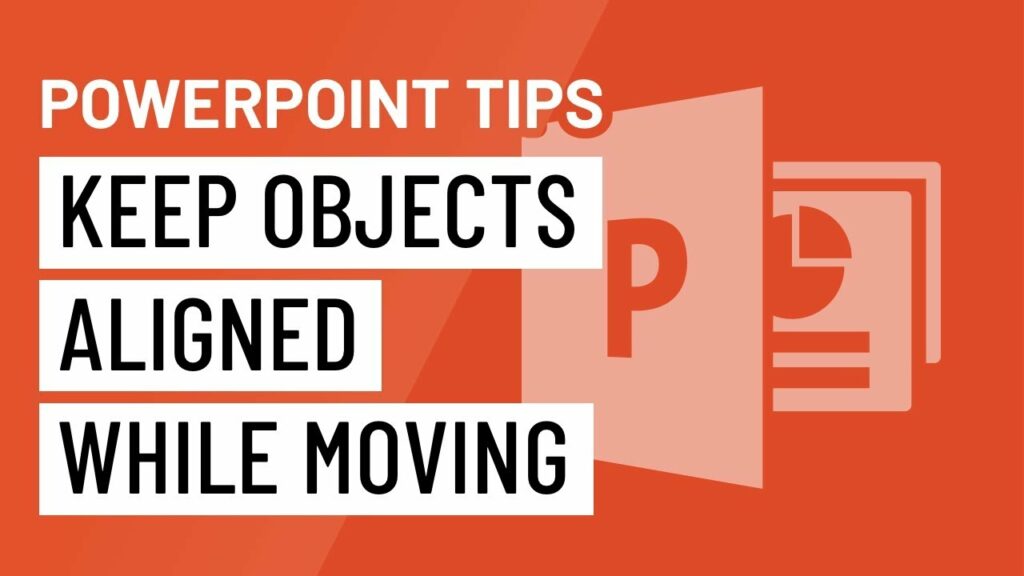Mastery of Precision: Keeping Objects Aligned While Moving in PowerPoint

In the realm of presentations, the visual layout and design play a crucial role in conveying information effectively and engaging the audience. Microsoft PowerPoint, a ubiquitous tool for creating slideshows, offers a plethora of features to assist users in arranging and aligning objects on slides. However, maintaining alignment while moving objects across slides or within a slide can be a challenging task, often leading to misalignment and inconsistencies in the presentation layout. To address this challenge, PowerPoint provides built-in tools and techniques for keeping objects aligned with precision, ensuring a polished and professional appearance. In this comprehensive guide, we’ll delve into the strategies and best practices for keeping objects aligned while moving in PowerPoint, empowering users to create visually stunning presentations that captivate audiences.
The Importance of Object Alignment:
Effective presentation design relies on meticulous attention to detail, including the alignment of objects such as text boxes, images, shapes, and charts. Proper alignment serves several key purposes:
- Visual Cohesion: Aligned objects create a sense of order and harmony, enhancing the overall visual appeal of the presentation.
- Readability: Well-aligned text and graphics are easier to read and comprehend, improving the audience’s understanding of the content.
- Professionalism: Consistently aligned objects convey professionalism and attention to detail, reinforcing the credibility of the presenter.
- Accessibility: Proper alignment improves accessibility for all audiences, including individuals with visual impairments or cognitive disabilities.
Techniques for Keeping Objects Aligned:
PowerPoint offers a variety of techniques for keeping objects aligned while moving them across slides or within a slide:
1. Smart Guides:
- Smart Guides are dynamic alignment guides that appear automatically when moving or resizing objects in PowerPoint.
- To enable Smart Guides, click on the View tab in the ribbon, then ensure that the Grid and Guides checkbox is selected.
- As you move objects, Smart Guides will appear to help you align them with other objects or the slide’s grid.
2. Alignment Tools:
- PowerPoint provides built-in alignment tools to assist users in aligning objects precisely.
- Select the objects you wish to align, then navigate to the Home tab in the ribbon.
- Click on the Arrange dropdown menu, then choose from options such as Align Left, Align Center, Align Right, Align Top, Align Middle, and Align Bottom to align the selected objects accordingly.
3. Distribute Tools:
- In addition to alignment tools, PowerPoint offers distribute tools to evenly space objects horizontally or vertically.
- Select the objects you wish to distribute, then navigate to the Home tab and click on the Arrange dropdown menu.
- Choose options such as Distribute Horizontally or Distribute Vertically to evenly space the selected objects.
4. Grouping Objects:
- Grouping objects in PowerPoint allows users to treat multiple objects as a single unit, making it easier to move and align them together.
- Select the objects you wish to group, then right-click and choose Group from the context menu.
- Once grouped, you can move and align the objects as a single unit, ensuring consistent alignment.
5. Snap to Grid:
- PowerPoint’s snap to grid feature automatically aligns objects with the slide’s gridlines for precise positioning.
- To enable snap to grid, click on the View tab, then check the Grid and Guides checkbox.
- Objects will snap to the nearest gridline as you move them, facilitating alignment with other objects or the slide’s layout.
Best Practices for Object Alignment:
To achieve optimal results when keeping objects aligned in PowerPoint, consider the following best practices:
- Consistency: Maintain consistency in object alignment throughout the presentation to create a cohesive visual experience.
- Use Gridlines: Leverage PowerPoint’s gridlines to ensure consistent spacing and alignment of objects across slides.
- Group Related Objects: Group related objects together to simplify alignment and manipulation, particularly for complex layouts.
- Check Alignment: Periodically review the alignment of objects using PowerPoint’s alignment tools or Smart Guides to ensure precision and consistency.
- Consider Accessibility: Ensure that aligned objects are accessible to all audiences, including individuals with visual impairments or cognitive disabilities.
Conclusion:
Keeping objects aligned while moving in PowerPoint is a fundamental aspect of presentation design that directly impacts visual clarity, readability, and professionalism. By leveraging built-in tools such as Smart Guides, alignment tools, distribute tools, grouping, and snap to grid, users can achieve precise alignment and create visually stunning presentations that captivate audiences. Additionally, adhering to best practices for object alignment, such as maintaining consistency, using gridlines, grouping related objects, and considering accessibility, ensures that presentations are not only visually appealing but also accessible to all audiences. So, the next time you embark on creating a PowerPoint presentation, remember to utilize these techniques and best practices for keeping objects aligned, empowering you to deliver presentations that leave a lasting impression on your audience.







